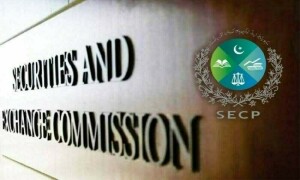Pakistan remains one of the countries with the largest gender gaps in the Global Gender Gap Index (GGGI) 2023. The country ranked among the lowest at 145th out of 146 countries. The index show that Pakistan has closed just 56.4percent of its overall gender gap, which might not be considered as even a little improvement from 2022 gap of 56 percent.
The 2023 Global Gender Gap Index (GGGI), published by the World Economic Forum, continues to deliver crucial insights into global gender equality. This index evaluates gender disparities in access to resources and opportunities across nations, focusing on four primary areas: Economic Participation and Opportunity, Educational Attainment, Health and Survival, and Political Empowerment.
Across the key dimensions used to gauge countries progress on gender gap,Pakistan struggles particularly in Political Empowermentand Economic Participation and Opportunity.
The country ranks among the lowest globally in political empowerment - not a surprise because the representation of women in political roles remains extremely low. Despite some progress with reserved seats for women in parliament, their actual influence on policymakingrestricted. Moreover, there are very few women holding ministerial or high-ranking political positions, and those who do often face substantial barriers and opposition.As if it was not weak already, the political victimizationthat includes women politicians over the last couple of years has only further dented political empowerment progress in the country.
The second weakest area for Pakistan is the economic participation opportunity where the country’s gender gap remains significant, with women having limited access to job opportunities, equal pay, and leadership roles. This has long been an issue in the country and the region where the labor force participation rate for women is notably low compared to men, reflecting deep-rooted socio-cultural barriers.
The area that has shown some improvement in the recent Gender Gap Index was Educational Attainment where the primary and secondary education enrollment for girls has increased. However, the countrycontinues to lag, and tertiary education remains a challenge. The gender gap in literacy rates also contributes to the overall disparity in educational attainment
The country’s performance against Health and Survival still reflects disparities in healthcare access and quality even though the gap narrower than in other categories. These disparities include Issues such as maternal health and gender-based violence.
Compared to its South Asian counterparts, Pakistan’s performance is the weakest with the largest gender gap. This can be seen from the fact that the region itself performs the lowest globally in gender parity, having closed 62.3 percent of its gap. While countries like Bangladesh and Nepal also experience gender disparities, they have made more substantial progress in bridging these gaps, especially in political empowerment and educational attainment. India, ranked 135, has closed 62.9% of its gender gap. While it has seen improvements in educational attainment and health, economic participation and political empowerment remain significant challenges.
The report makes some key recommendations to bridge these gaps that are often discussed and deliberated across various forums. It recommends a multifaceted approach involving both policy reforms and societal changes. These include investment in female education economic policies to promote women workforce participation, improving healthcare infrastructure and increasing female representation in politics. The bottom-line is that improvement in gender disparities will bring growth and economic stability – those in power know this. Whether it’s part of their agenda is another story.

























Comments
Comments are closed.